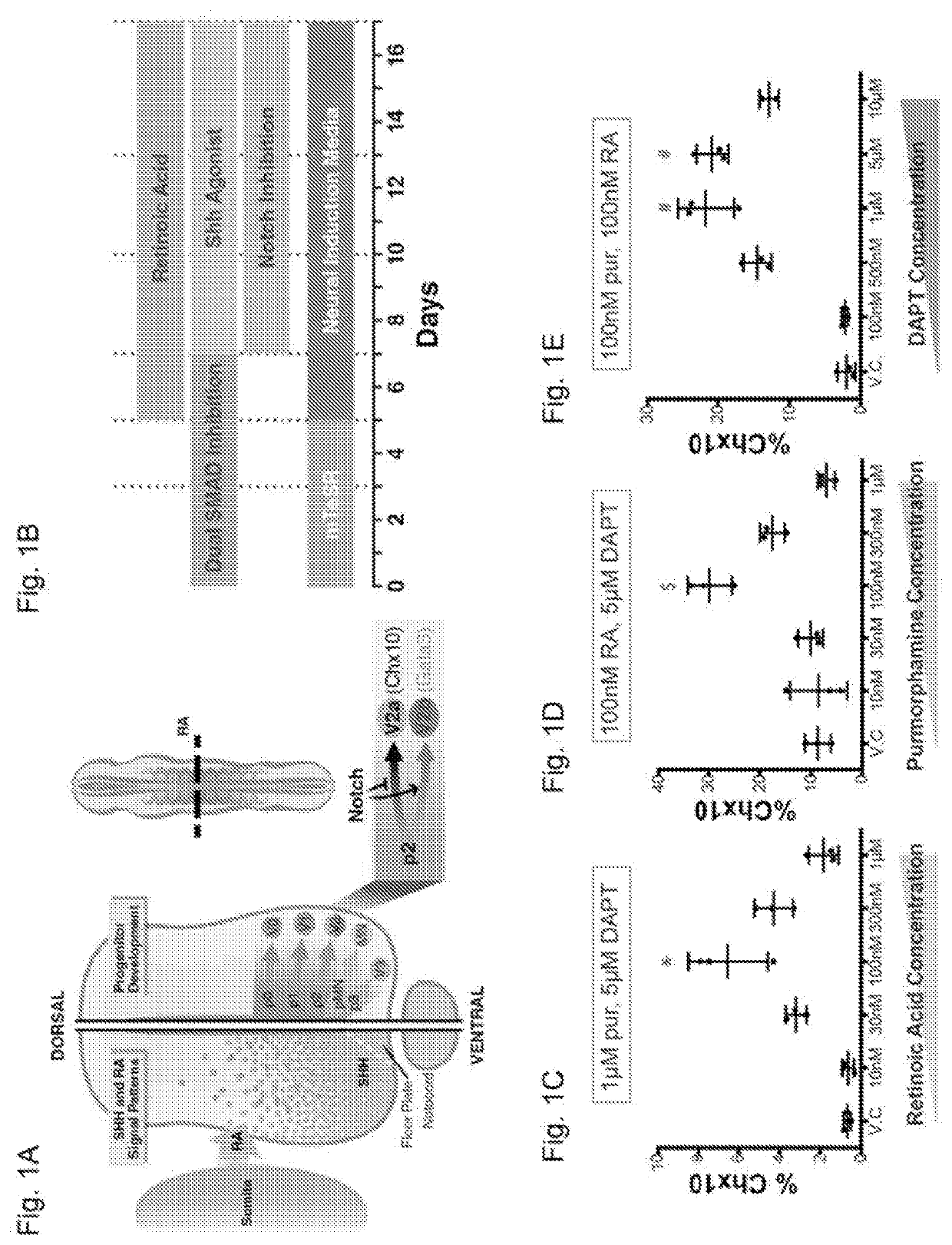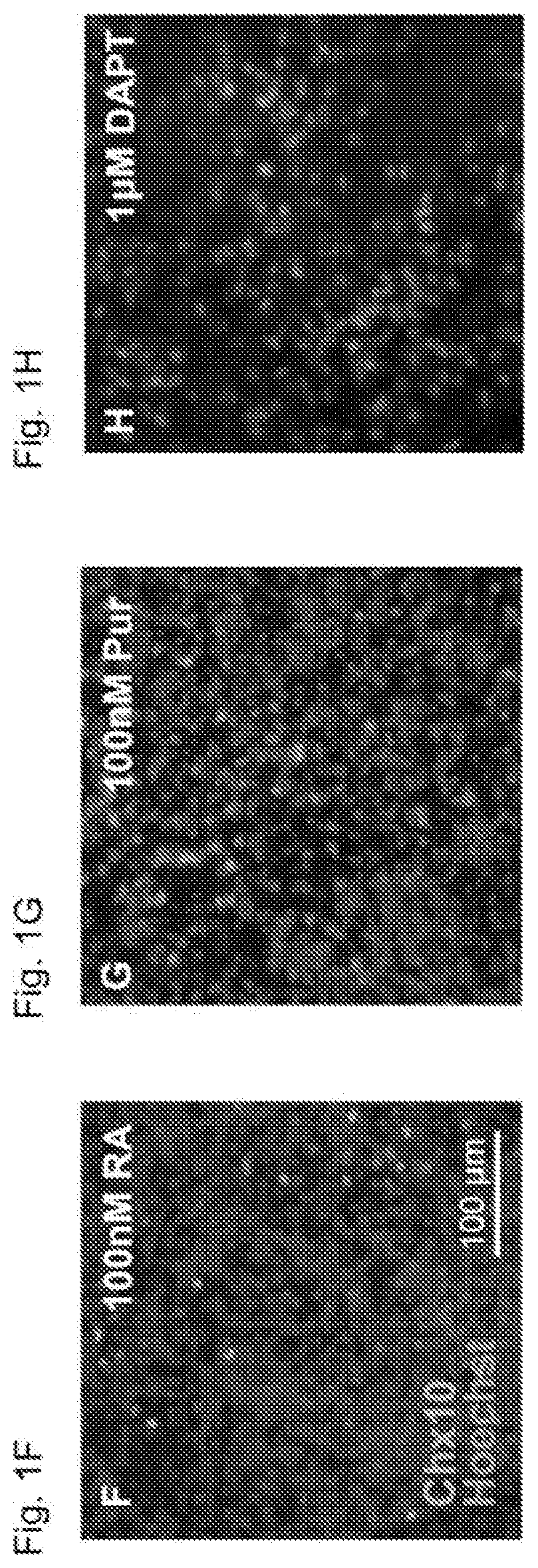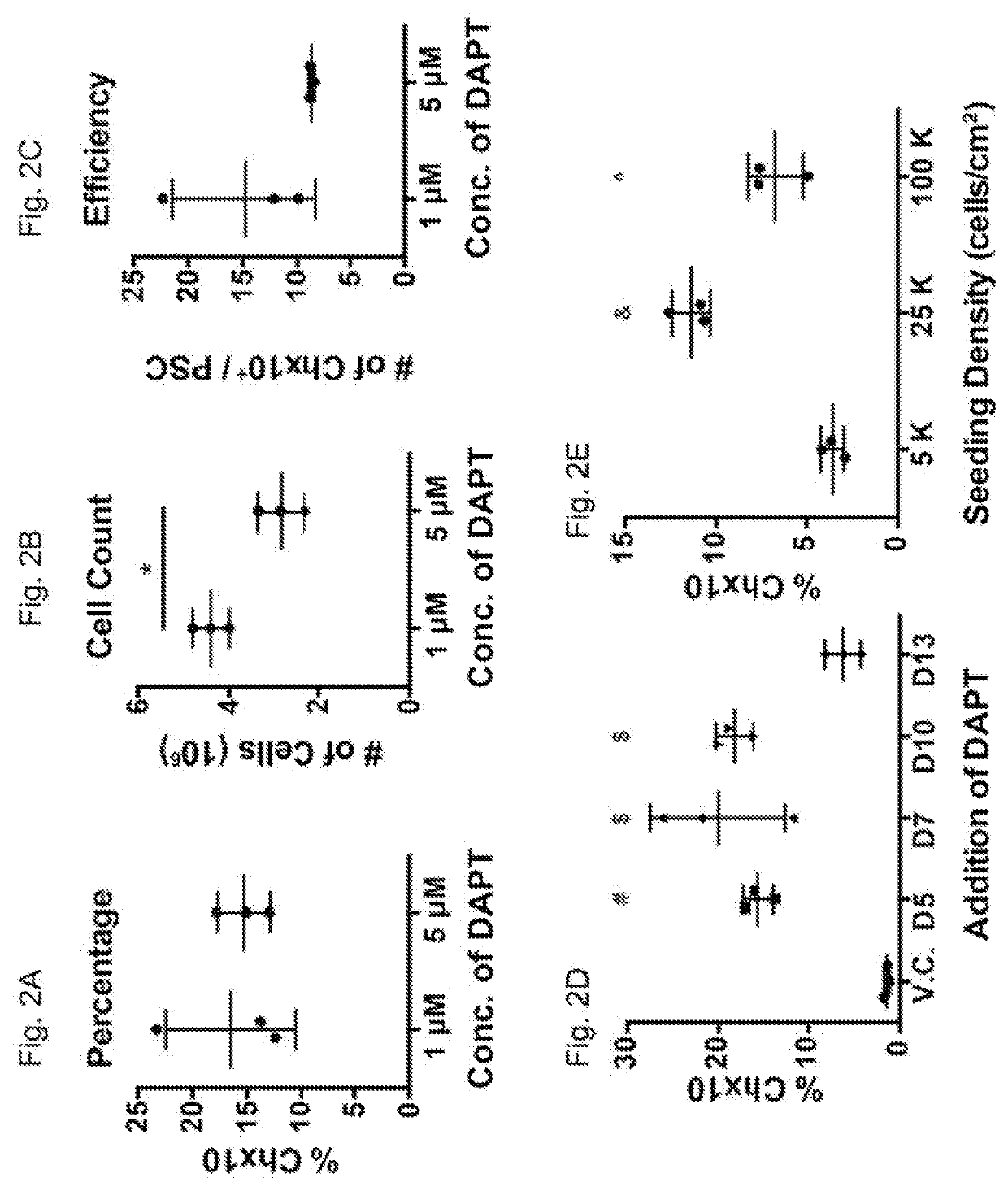In vitro methods of differentiating stem cells into neurons and neurons generated using the same
a technology of stem cells and neurons, which is applied in the field of in vitro methods of differentiating stem cells into neurons and neurons generated using the same, can solve the problems of limiting the ability to examine the therapeutic potential of v2a and the lack of robust sources of human v2a interneurons
- Summary
- Abstract
- Description
- Claims
- Application Information
AI Technical Summary
Benefits of technology
Problems solved by technology
Method used
Image
Examples
example 1
Human PSC-Derived V2a Interneuron Differentiation is Dependent on Retinoic Acid, Sonic Hedgehog and Inhibition of Notch Signaling
[0195]To differentiate V2a interneurons from human PSCs (hPSCs), the concentrations of morphogens and signaling pathways implicated in V2a commitment (RA, Shh, and Notch inhibitor, DAPT) were sequentially varied and the percentages of CHX10+ differentiated from hPSCs at day 17 were examined. RA concentration of 100 nM starting at day 5 with fixed concentrations of the Shh agonist, purmorphamine, (pur, 1 μM) and DAPT (5 μM) (both beginning on day 7) resulted in a CHX10+ population at day 17 (˜6%, FIG. 1C). Similarly, 100 nM of pur treatment beginning at day 7 with 100 nM RA and 5 μM DAPT concentrations resulted in ˜30% Chx10+ cells after 17 days of differentiation (FIG. 1D). Furthermore, DAPT concentration was varied beginning on day 7 with fixed RA and pur concentrations (100 nM each) and 1 μm and 5 μM DAPT resulted in comparable CHX10+ populations (˜15%; ...
example 2
Specificity of V2a Differentiation
[0199]Gene expression analysis throughout the first 17 days of differentiation was performed to characterize the temporal changes of the V2a interneuron cell population (FIG. 3A). The expression of the pluripotency gene POU5F1 expression decreased by day 3 and remained down-regulated through day 17. Early neural markers expressed during neural tube development increased by day 7 (PAX6 and NES (Nestin)). Other markers of spinal cell types expressed in the ventral neural tube (GATA3, OLIG2, HB9, and SIM1) began as early as day 3 and continued to increase expression throughout the differentiation. Expression of markers for the p2 domain (FOXN4) and committed V2a interneurons (CHX10 and SOX14) began on day 10 and were highly upregulated by day 15. It appeared that neuronal genes (NEFL (NF), TUBB3 (βIII tubulin)) were more highly expressed (˜70 fold and ˜10 fold respectively) than any glial (PDFGRA, CSPG4, SOX10, and GFAP) or retinal cell types (THY1, IR...
example 3
Single-Cell RNAseq Analysis
[0204]Single-cell RNAseq analysis was performed to define the cellular composition of the heterogeneous cultures obtained from the above experiments. Seven distinct clusters of cells (designated A-G) were identified by k-means clustering using 12 principal components (FIG. 10A) with 77% of CHX10+ cells contained within cluster B (FIG. 10B). The top globally differentially expressed genes were used to distinguish the general phenotypes of the seven clusters that defined the total population (FIG. 10C and Table 3 (below)). Gene ontology (GO) analysis and individual inspection of the top differentially expressed genes (FIGS. 11-13) suggested that clusters A and B were committed neurons [neuralfilament medium polypeptide (NEFM) and NSG1], cluster C was glial cells (PLP1 and TTHY1), clusters D and E were neuron progenitors (NEUROD1), cluster F contained mitotically active neuronal cells (FOXN4, PTTG1, and UBE2C), and cluster G consisted of mesenchymal / muscle ce...
PUM
| Property | Measurement | Unit |
|---|---|---|
| temperature | aaaaa | aaaaa |
| time | aaaaa | aaaaa |
| time | aaaaa | aaaaa |
Abstract
Description
Claims
Application Information
 Login to View More
Login to View More - R&D
- Intellectual Property
- Life Sciences
- Materials
- Tech Scout
- Unparalleled Data Quality
- Higher Quality Content
- 60% Fewer Hallucinations
Browse by: Latest US Patents, China's latest patents, Technical Efficacy Thesaurus, Application Domain, Technology Topic, Popular Technical Reports.
© 2025 PatSnap. All rights reserved.Legal|Privacy policy|Modern Slavery Act Transparency Statement|Sitemap|About US| Contact US: help@patsnap.com



